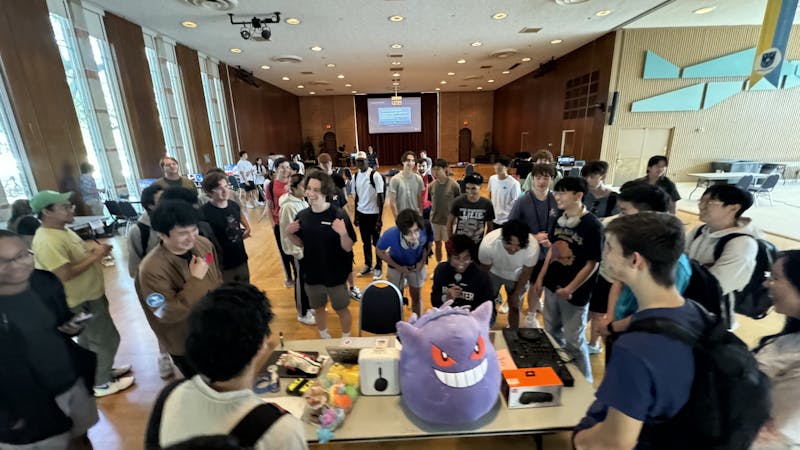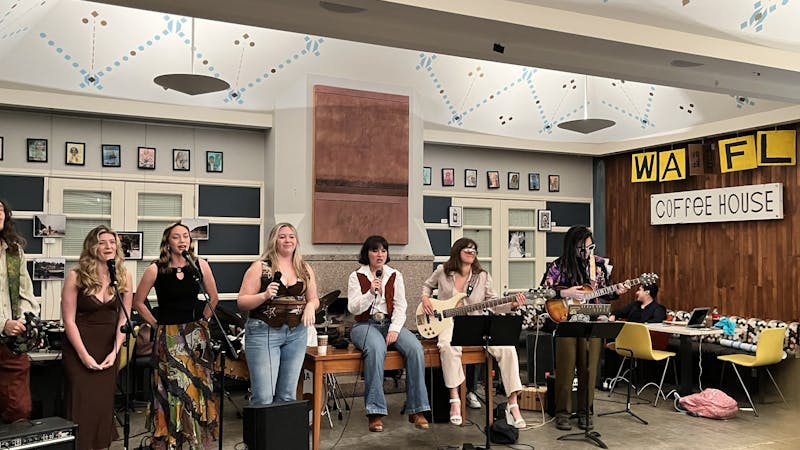Local Asian American artists respond to the pandemic in new Fondren exhibit

“Forgive but Not Forget” by Sherry Tseng Hill
Now on display in Fondren Library, Houston Asian American Archive’s “Faces in the Pandemic” exhibit explores Asian American experiences during the COVID-19 pandemic through dynamic visual art, fostering reflection and discussion on relevant topics of racism, isolation, history and intersectionality. The exhibit explores a history of Asian American discrimination from the early 1800s to today and prompts the viewer to think about what this moment will look like in our collective history.
The Houston Asian American Archive, managed by the Chao Center for Asian Studies and housed in the Woodson Research Center, brought together a diverse group of local artists to respond to the outright violence and subtle prejudices experienced by the Asian American community during the pandemic. The artists combined inspirations from the historical archives and their personal family histories to create a message of unity in the face of uncertainty and suffering. Works featured in the exhibit blend more traditional artforms with contemporary issues as a celebration of cultural diversity but also a demand for change.
Many of the pieces address a painful reckoning with history in order to look towards a better future. Houston-based artist Victor Ancheta’s clock piece “The Good Hour” uses motifs of time, religion and death to portray the culmination of events in 2020.
“I chose time [as the topic] really because I think what's been happening to our society has happened before,” Ancheta said.
Local artist Sherry Tseng Hill’s horizontal scroll timeline piece “Forgive but not Forget” displays a history of events of discrimination against Asian Americans, such as anti-Filipino violence and Japanese internment camps, many of which are not taught in schools.
“If you don't forgive people and the slights that have been done to you, not only do those things live in your head and fester in you, but you just could never come out of it,” Hill said about the title of her piece. “So you have to forgive. But... that's something we shouldn't forget so we don't repeat it and that we can overcome it.”
Many of the artists embrace the process of relearning and reconciling with history in order to better conceptualize Asian American futurism, a contemplation of how the future will impact the community’s social and cultural values. Brandon Tho Harris, another Houston-based artist, uses deconstruction and reconstruction as a process of healing in his piece “Not Your Virus,” which is made out of woven traditional Asian American fabrics, hats and gold thread.
“The piece is many different slices of this traditional Vietnamese garment, which is not only traditional to Vietnamese people but even the motifs in this textile are found in China, Japan, all different ranges of Asian cultures. I deconstructed that, and then I started weaving them kind of representing people and coming together and how something can be so strong together but if it’s just one, it’s weak,” Harris said.
Houston-based artist Anthony Pabillano’s series “Progression of a Portrait” is made of intricate layers of different colors of brown paper, a reminder that there is more to people and history than what meets the eye.
“We're all built from the same foundations. In a way we're all different layers,” Pabillano said. “You often have to break down the layers one at a time to get up to get at the kernel of that person.”
Antonius Tin Bui’s work reflects on history through a piece that reclaims the Zippo lighters carried by American soldiers during the Vietnam War as well as through an intricate red and blue paper cutting series titled “ReModel Minority.” Tin Bui, a former resident artist at the Houston Center for Contemporary Craft, said that they hope to challenge ideas of patriotism and call out how the American Dream is inaccessible for many.
“[The American Dream] is built on the idea that success equates to financial stability, to whiteness, to becoming apolitical, to silence and to really just becoming a puppet to the American system and the American industry,” Tin Bui says.
Duncan College senior Ashley Tseng’s caution tape portrait drawings also navigate what it means to be an Asian American facing heightened discrimination since the COVID-19 crisis began. Tseng uses caution tape to represent how Asian Americans have been treated with suspicion and fear during the pandemic.
The COVID-19 pandemic has given many the time and space to reevaluate their missions as individuals and institutions. Instead of hopelessness and resignation, Tin Bui encourages readers to be fearless.
“Be unafraid to dream of a utopia and actively work towards it alongside community members,” Tin Bui said.
The “Faces in the Pandemic” exhibit encourages viewers to think about what this moment in history calls for and emphasizes that no amount of work towards a more just society will go unnoticed. Exhibiting both quiet activism and blatant protests, the exhibit provides a glimpse of art as a language that simultaneously acknowledges the past and demands change in our communities.
The exhibit is on display for Rice students, faculty and staff in Fondren Library until Nov. 15. Updates on additional reopening plans for community members can be found at library.rice.edu.
More from The Rice Thresher

Jeremy Zucker is no longer a ‘sad-boy troubadour’
Jeremy Zucker’s arms, like most of his body, host a scrapbook of tattoos — a faded clementine peel, his childhood pets (Rusty and Susie), a Pinterest doodle of Sonic the Hedgehog with a bouquet of flowers. His middle finger is etched with a single tooth, hanging off a thin branch wrapping around the rest of his hand.

Super Smash Bros. ultimate tournament sees smashing success
The Super Smash Bros. Club held their second annual ultimate tournament Friday, April 12. Club president Jashun Paluru said all Smash players were welcome, regardless of ability, experience or involvement in the club. The event was held in collaboration with Owls After Dark, a late-night activity series headed by the Rice Student Center, at the Rice Memorial Center’s Grand Hall.

Tribute band ‘Suede Hedgehog’ talks inspirations, legacies
Last Thursday, the halls of the RMC were graced with smooth melodies and funky grooves courtesy of “Suede Hedgehog,” Rice’s very own tribute band to “Silk Sonic,” a musical duo made up of Bruno Mars and Anderson .Paak. Although the tiny desk concert only lasted about 20 minutes the atmosphere was electric, and Coffeehouse — their venue — was packed with listeners.

Please note All comments are eligible for publication by The Rice Thresher.